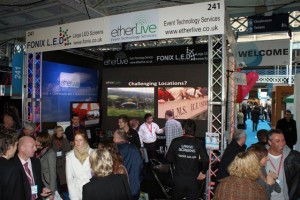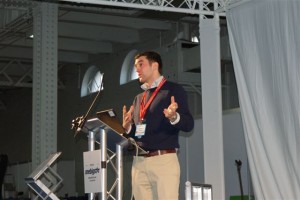With attendee numbers at The Event Show at Olympia last week apparently up on 2008 figures, there was a positive feel and vibe to the show. Yes, there were plenty of conversations about whether the downturn was having an impact but all in all it was business as usual, with organisers and suppliers planning as normal for the 2009 season.
We took the chance to discuss some of the new products and services that we are launching for the 2009 event season. In the Wi-Fi space we have increased our range of solutions to include a new market leading technology that is ideal for the events industry as it is specially designed to work in ‘noisy’ environments using a patented beam-steering technology. This gives excellent connectivity even when rogue wireless units appear on site or large lorries start creating disturbances! These devices also support the new ‘n’ standard giving a much higher (300Mbps) throughput, ideal for services such as video streaming.
Power independence remains a key factor in our site designs so that our network and communication services remain operational whether a generator fails or not. Our power units switch from generator/mains to battery in a few milliseconds with no loss of service and can remain on battery for up to 24 hours (or longer if required) if site power is a problem.
Site Operations is another area where we have been busy. Extending on our modular ‘POD’ design we now have a special version aimed at providing all the key services at a remote site from a small unit that can be deployed quickly when staff first arrive on site. It’s pretty much a portable ‘office IT environment’ keeping a site operations team connected and productive from anywhere.
To round off the enhanced line-up a new mobile phone ‘portal’ or event guide was also on display. Working across a large range of phones (with no Java download) the guide is highly customisable and varies user experience based on their connection type (2G, 3G, Wi-Fi, etc). It can also be used in an interactive fashion enabling features such as uploads and voting.
As always further information is available on the website or we are more than happy to demonstrate these new technologies and services either at our base in Wiltshire or on a suitable customer site. Let’s just hope that 2009 brings a better summer!





